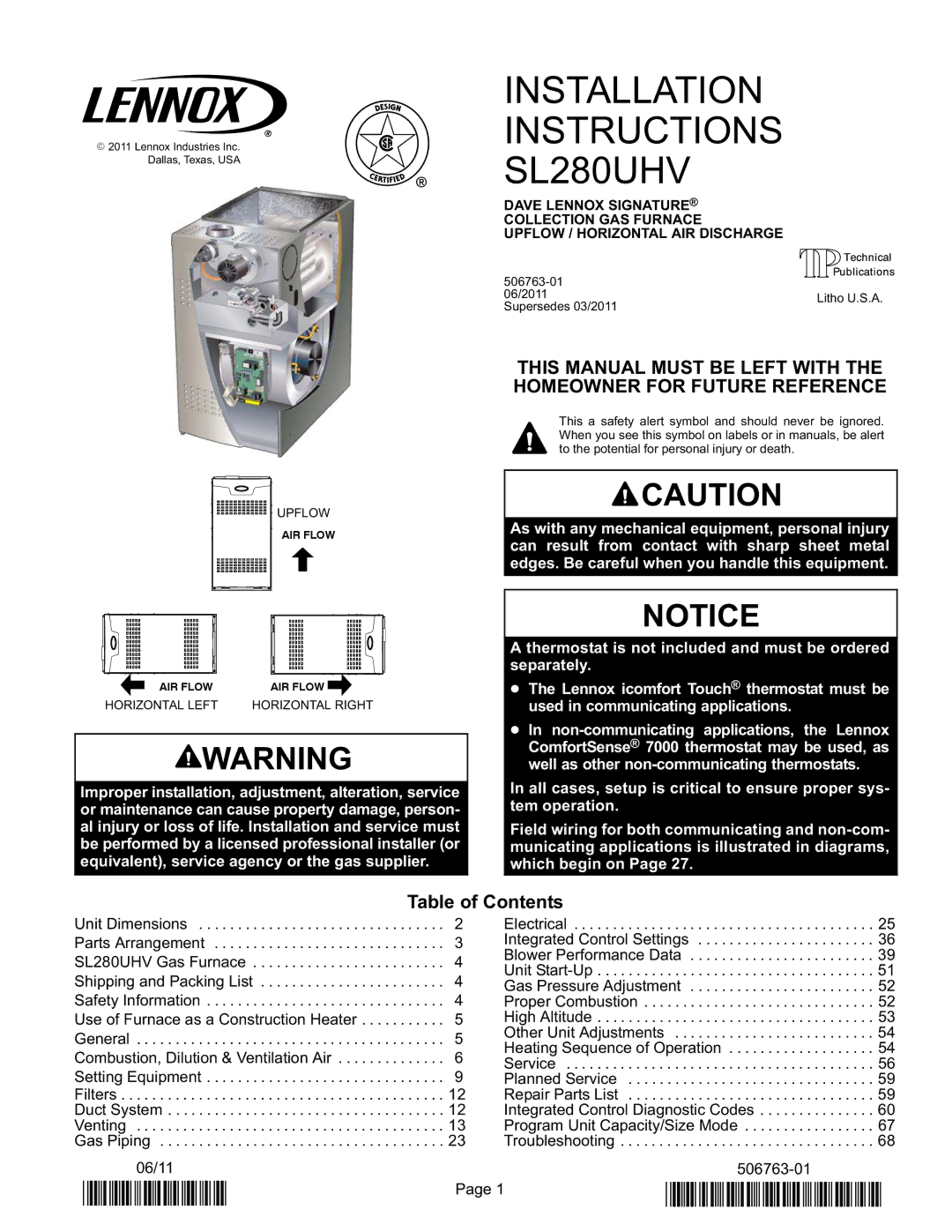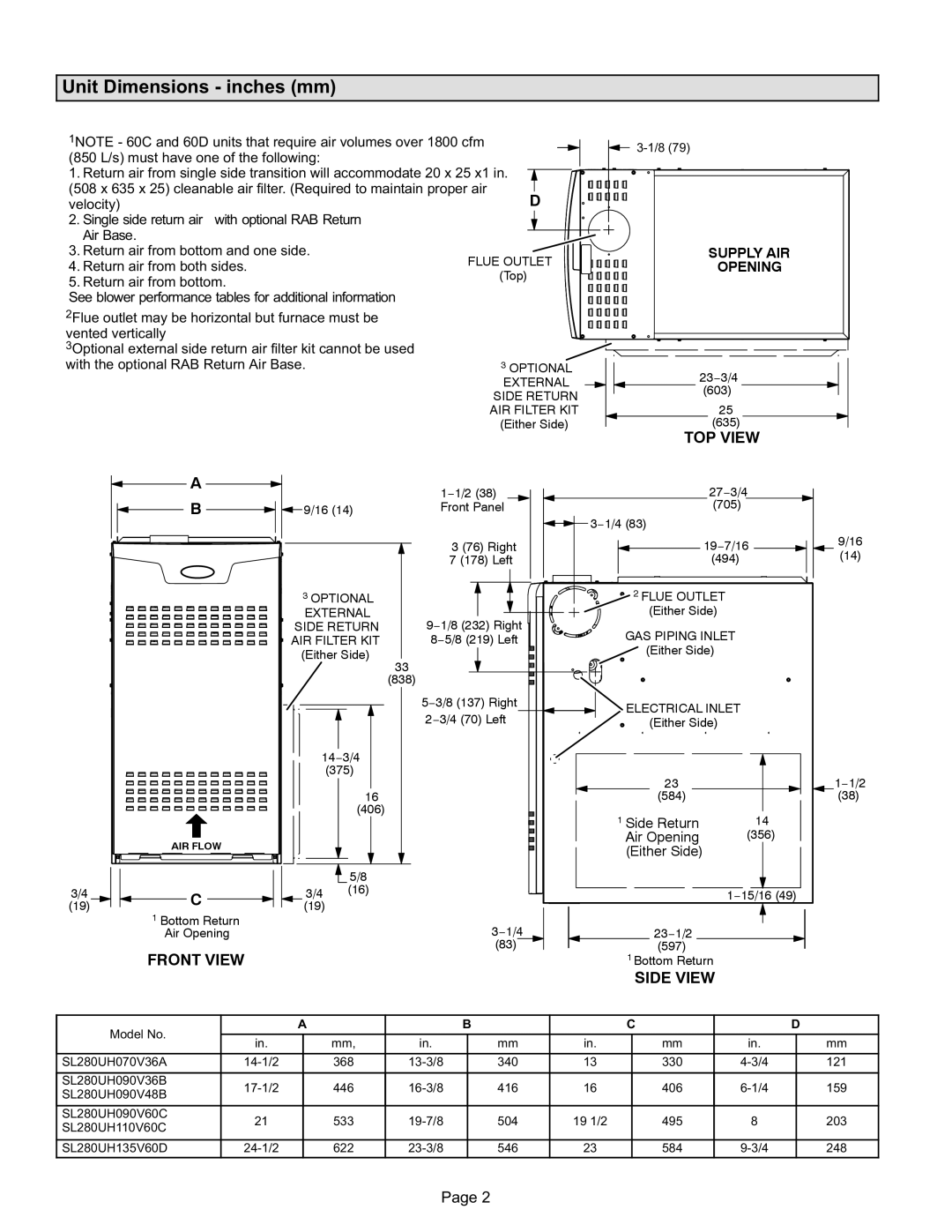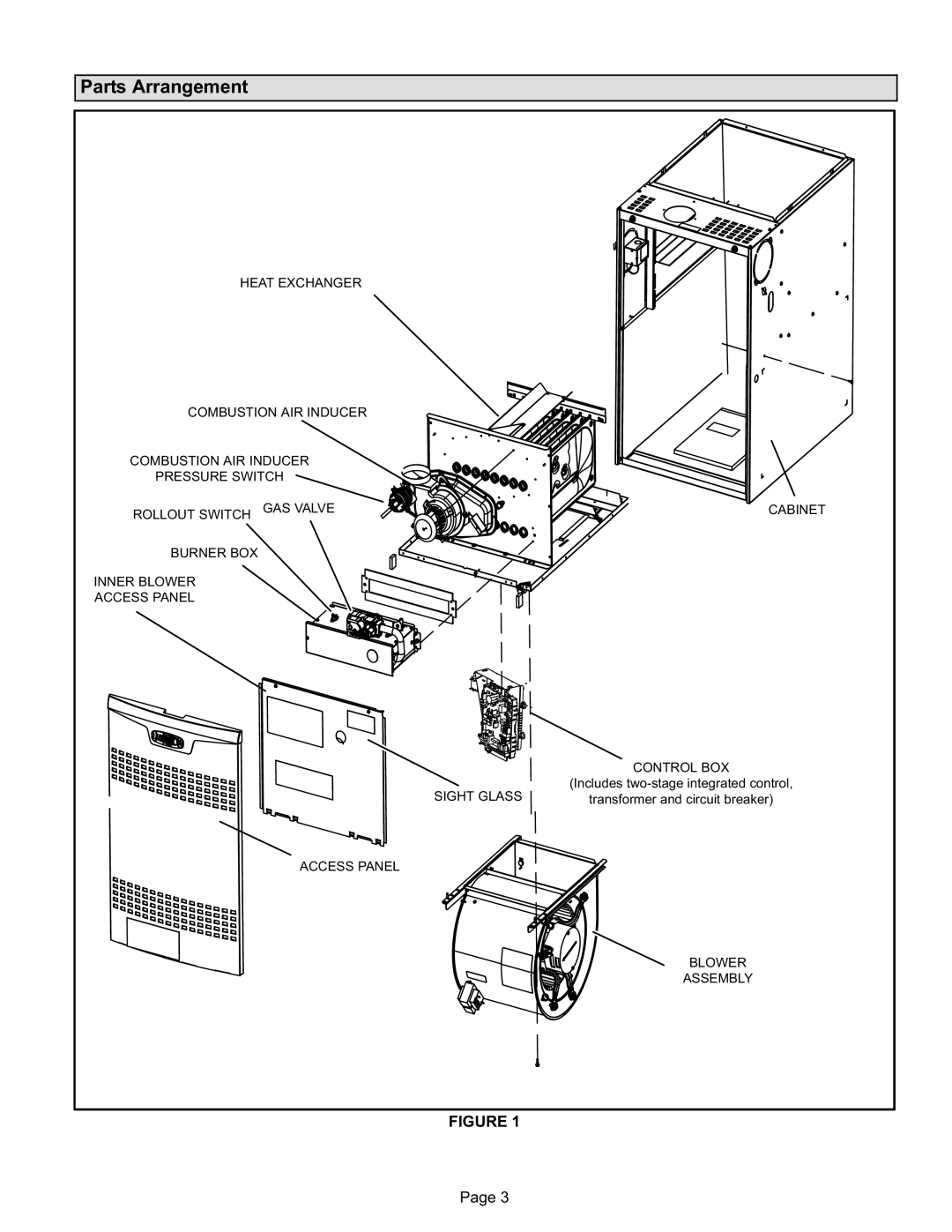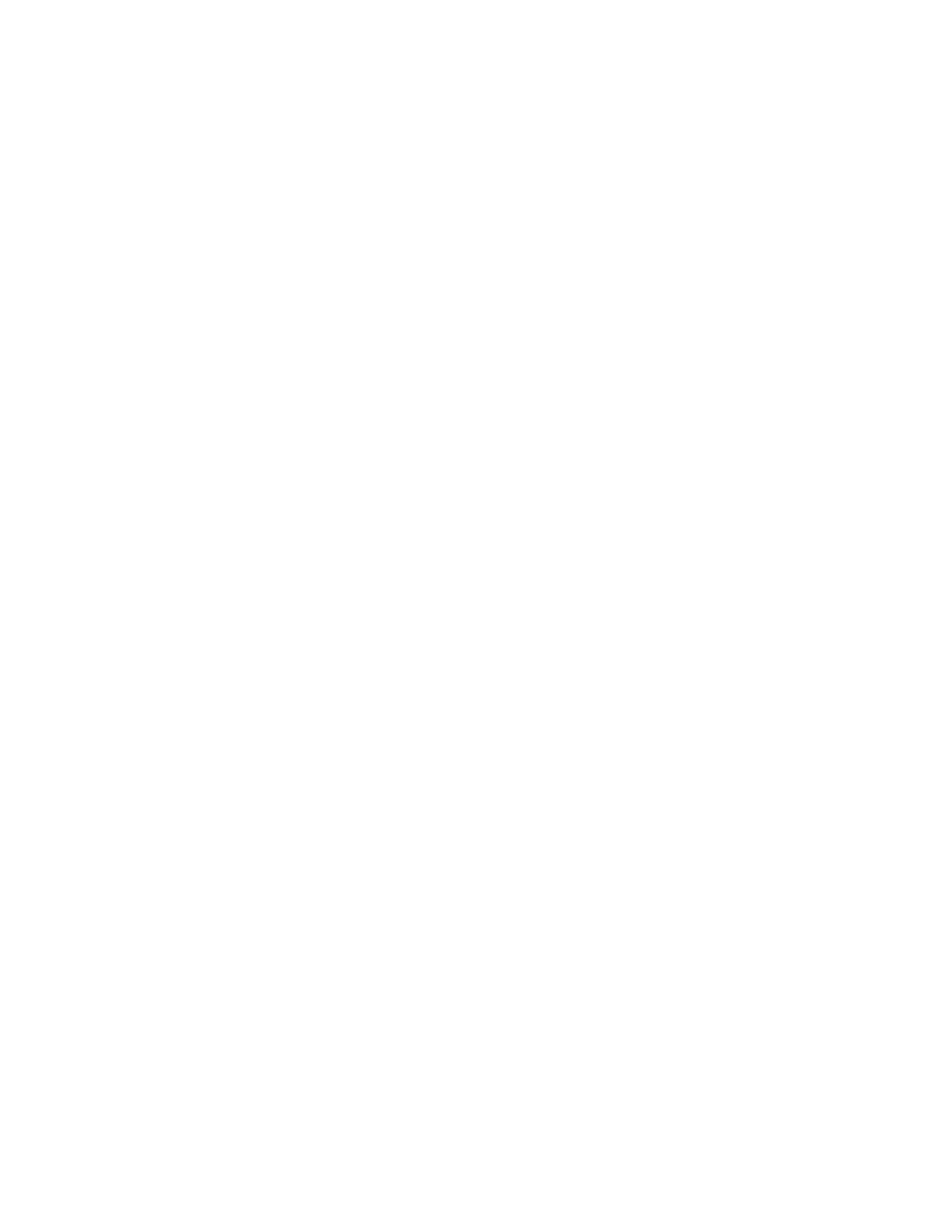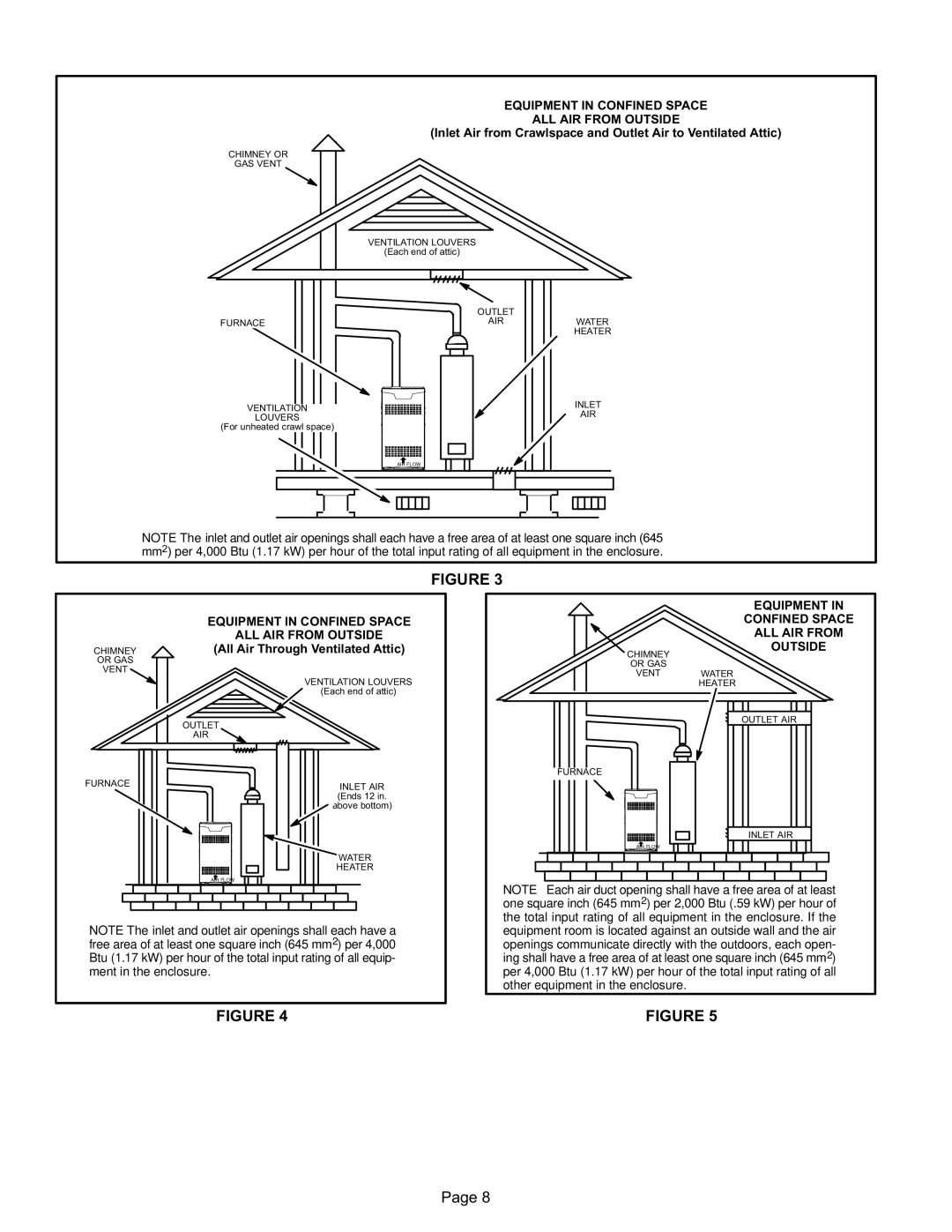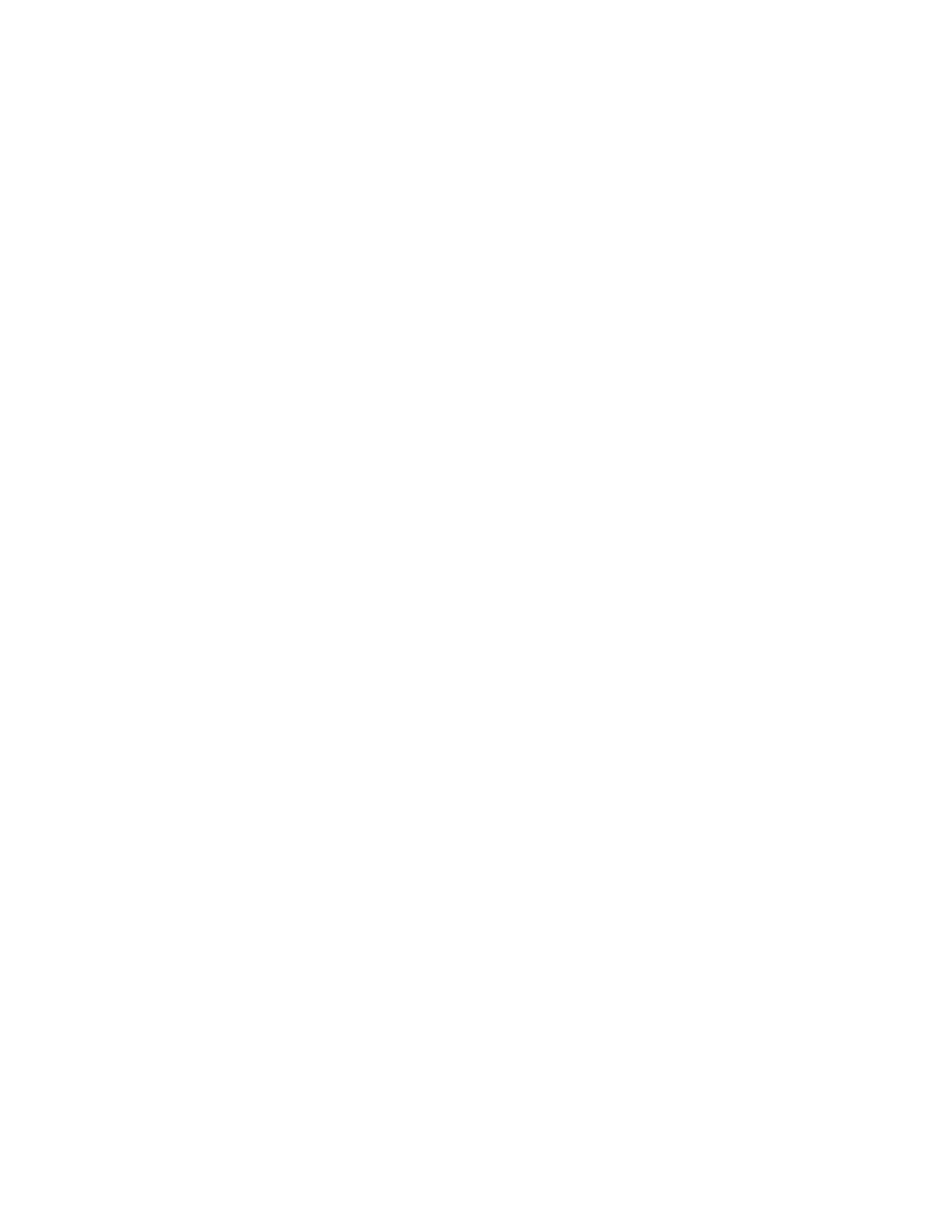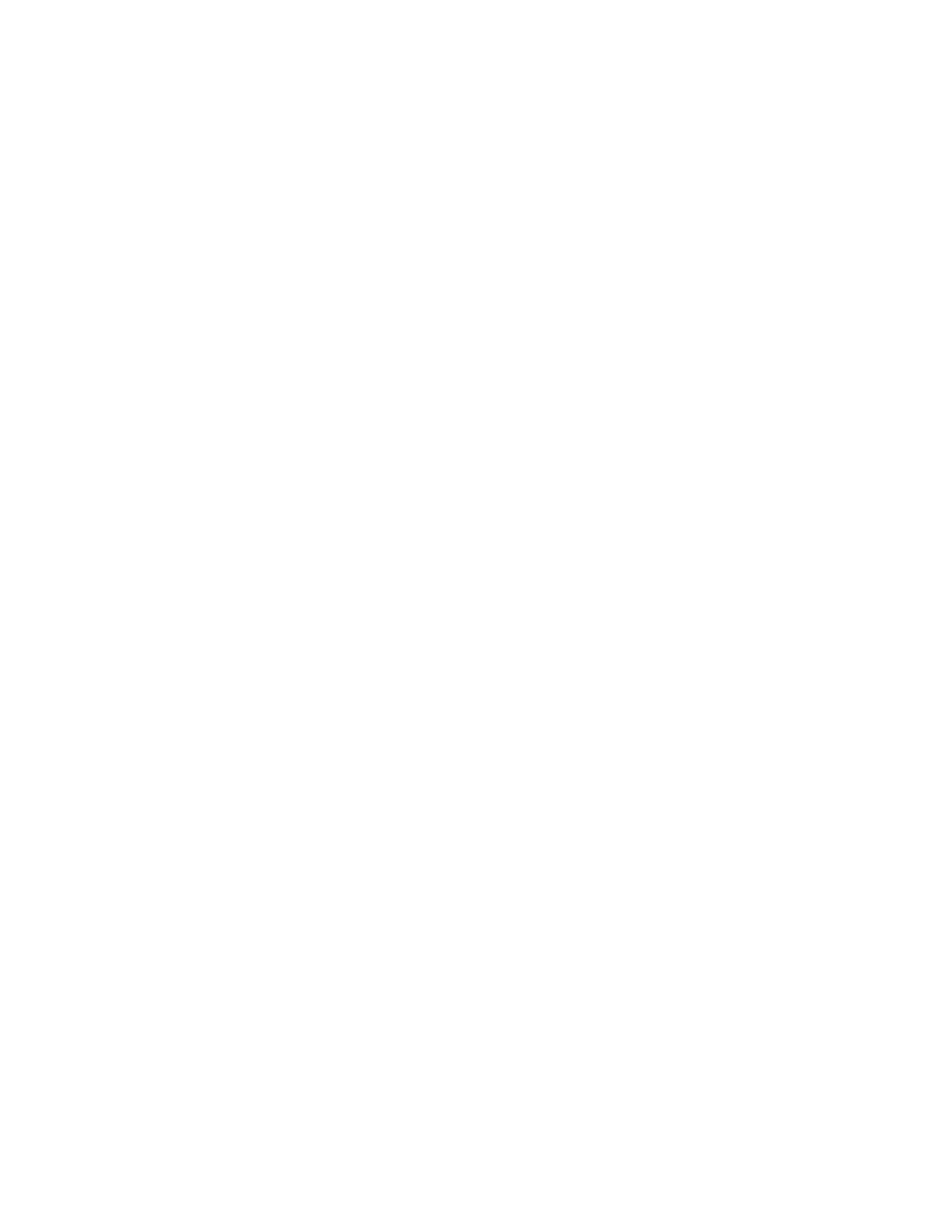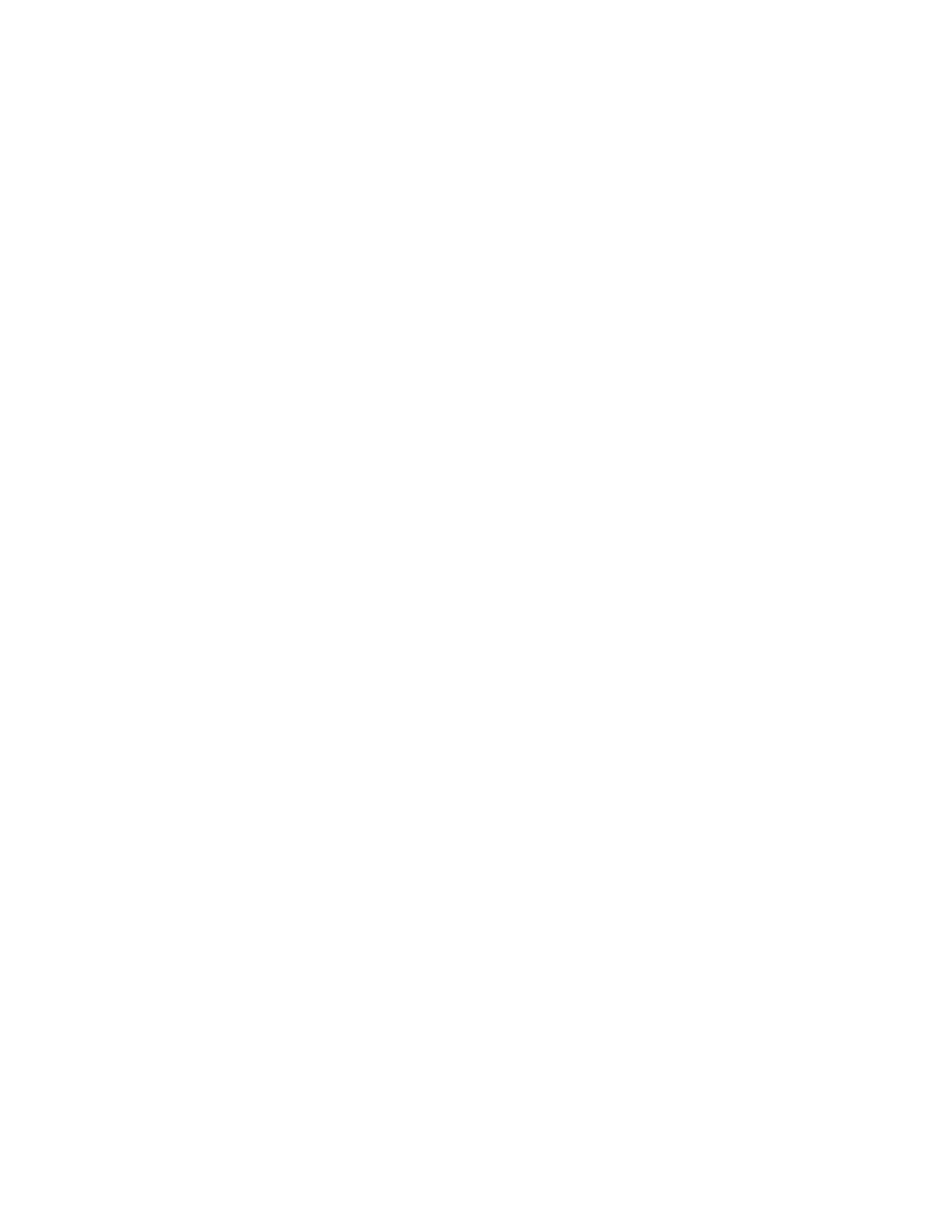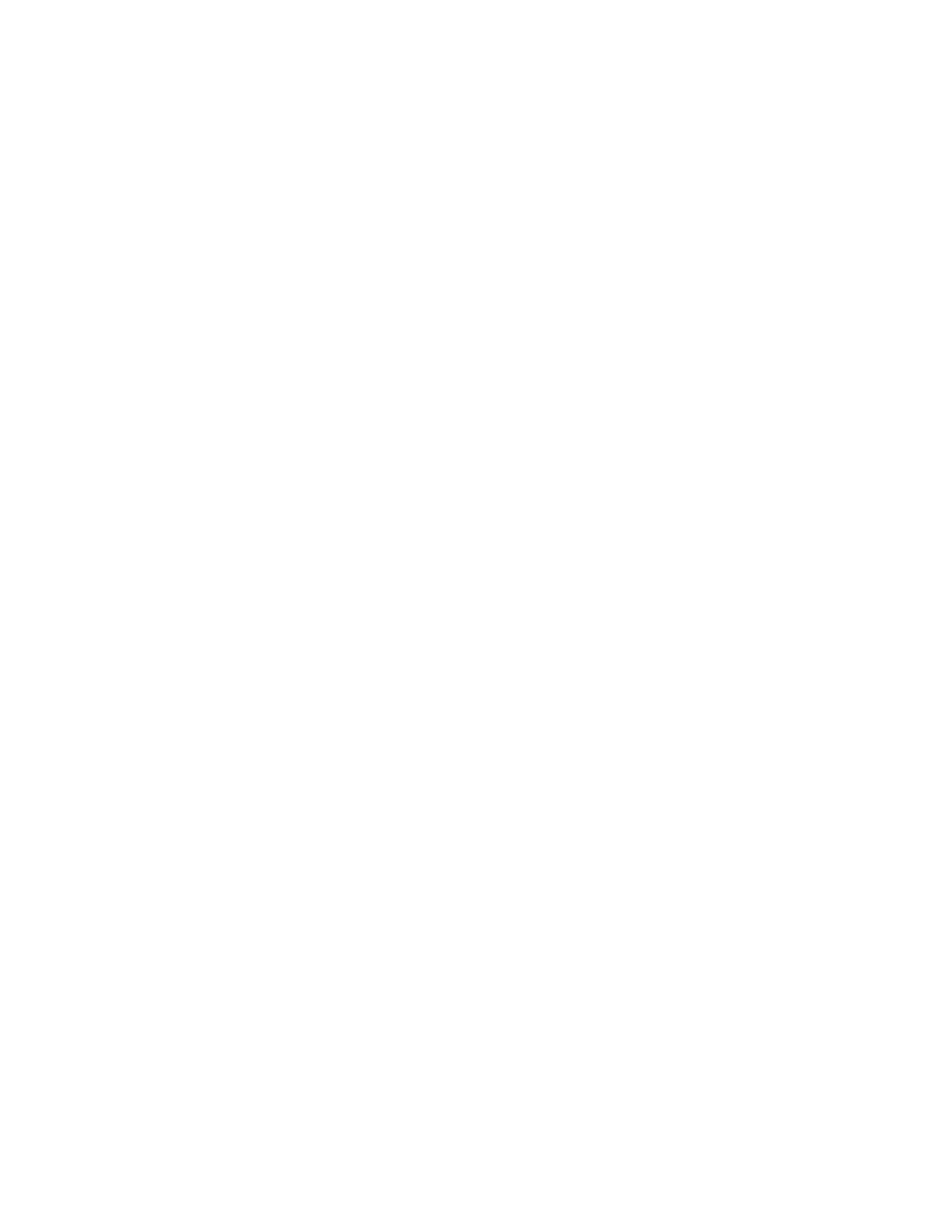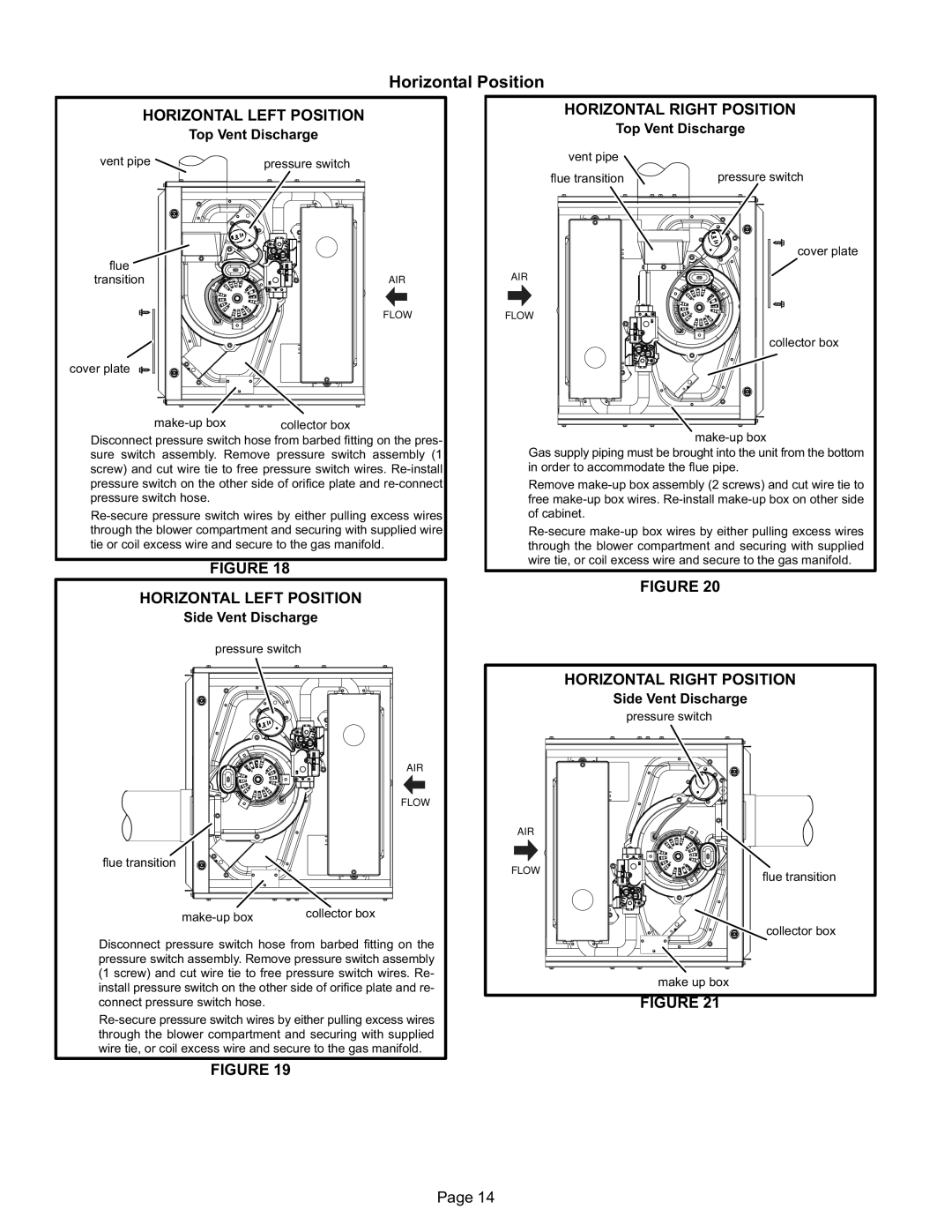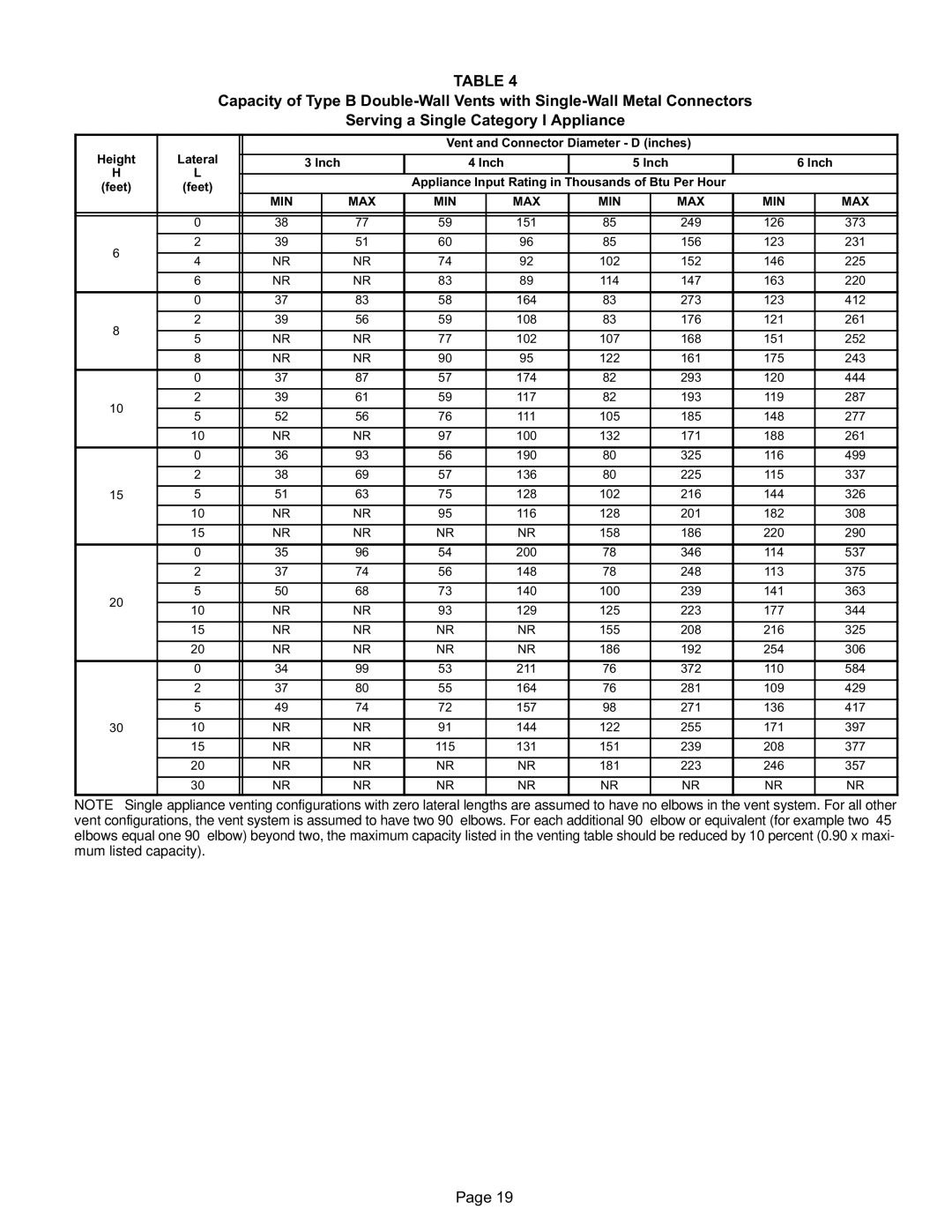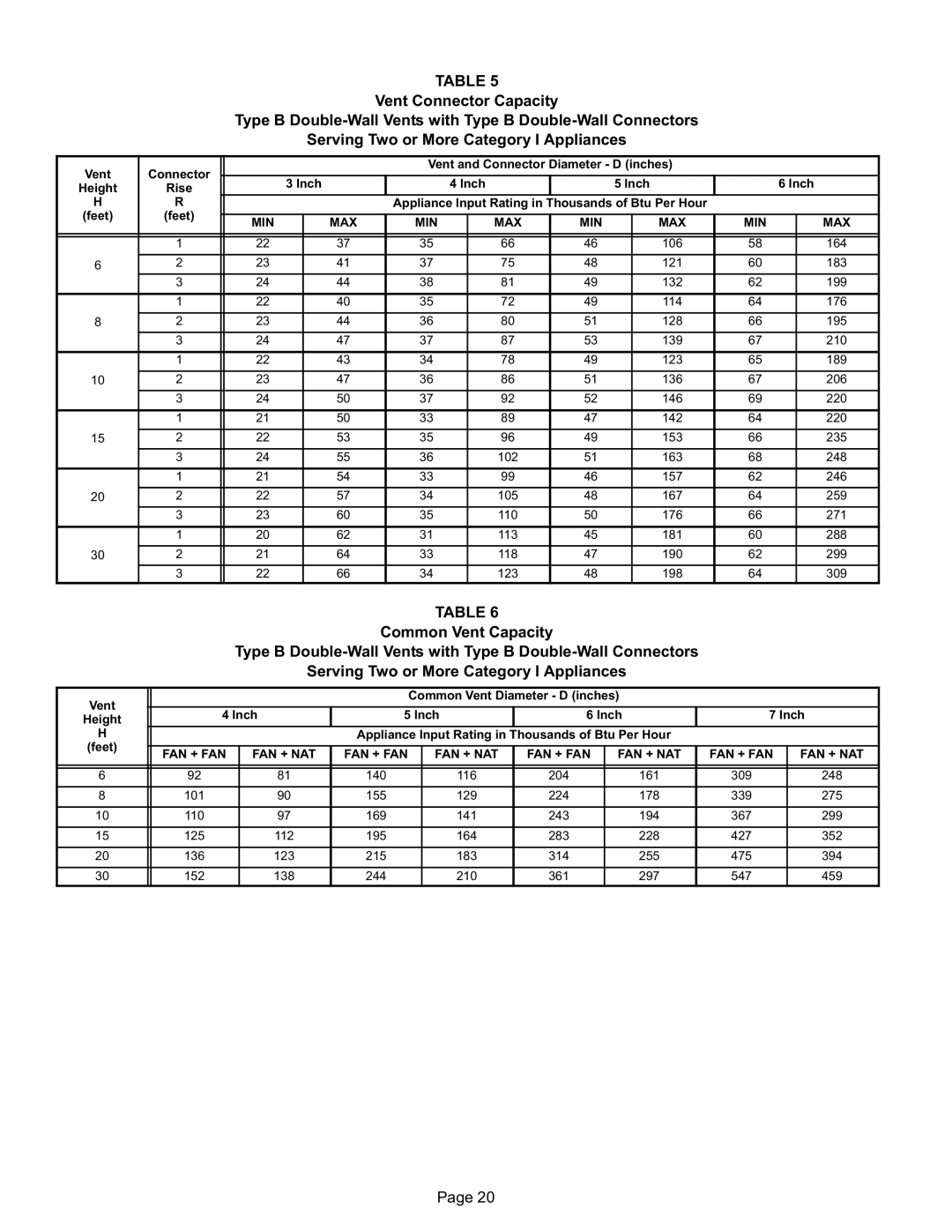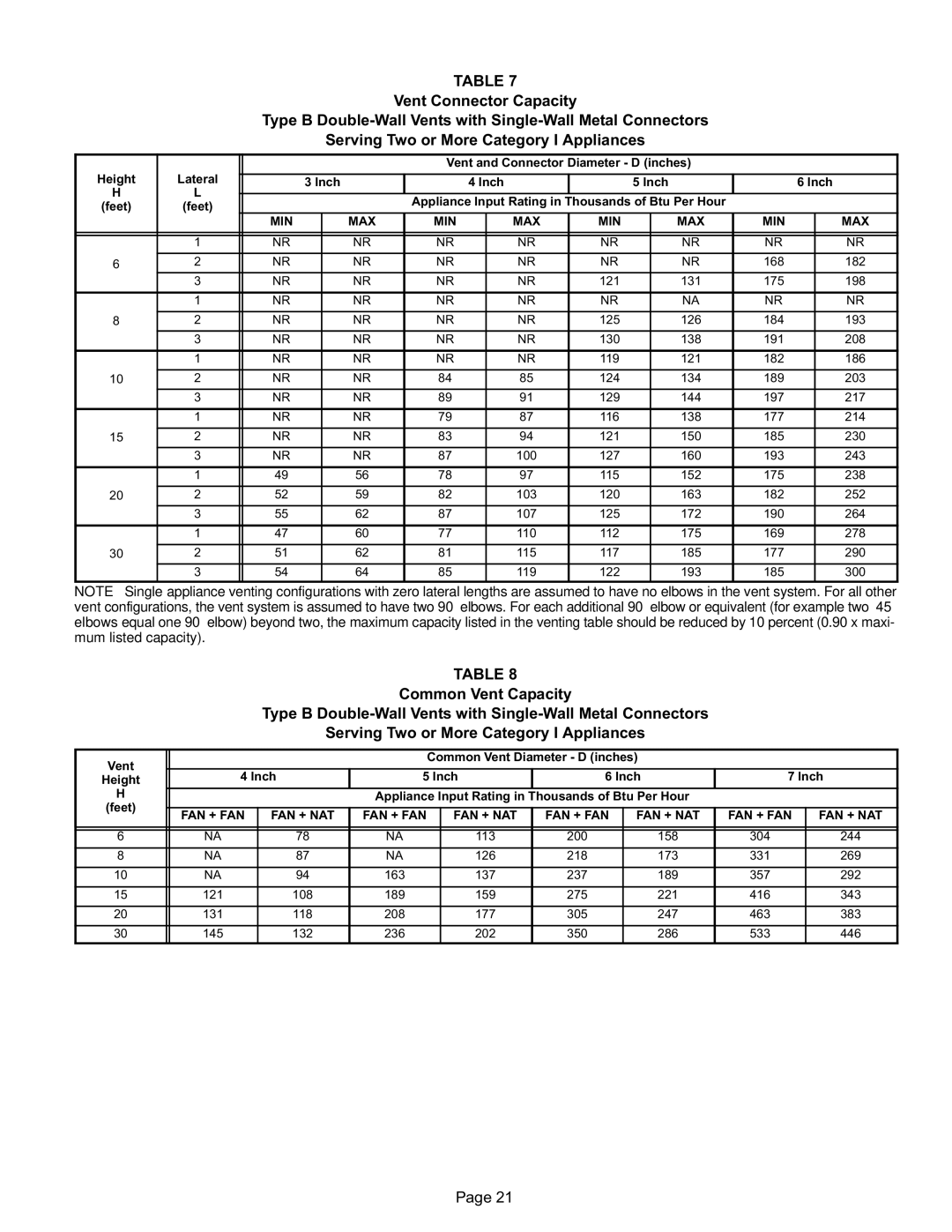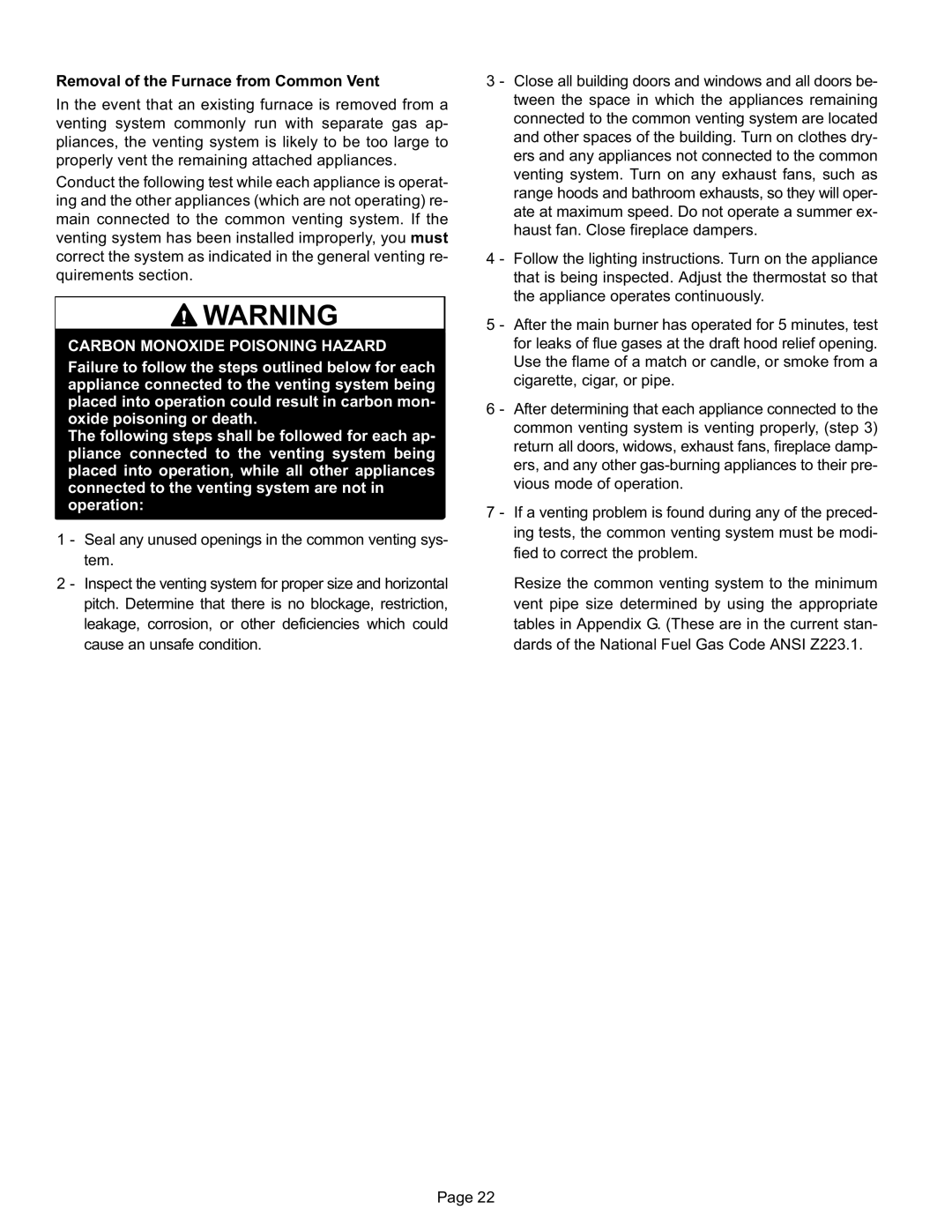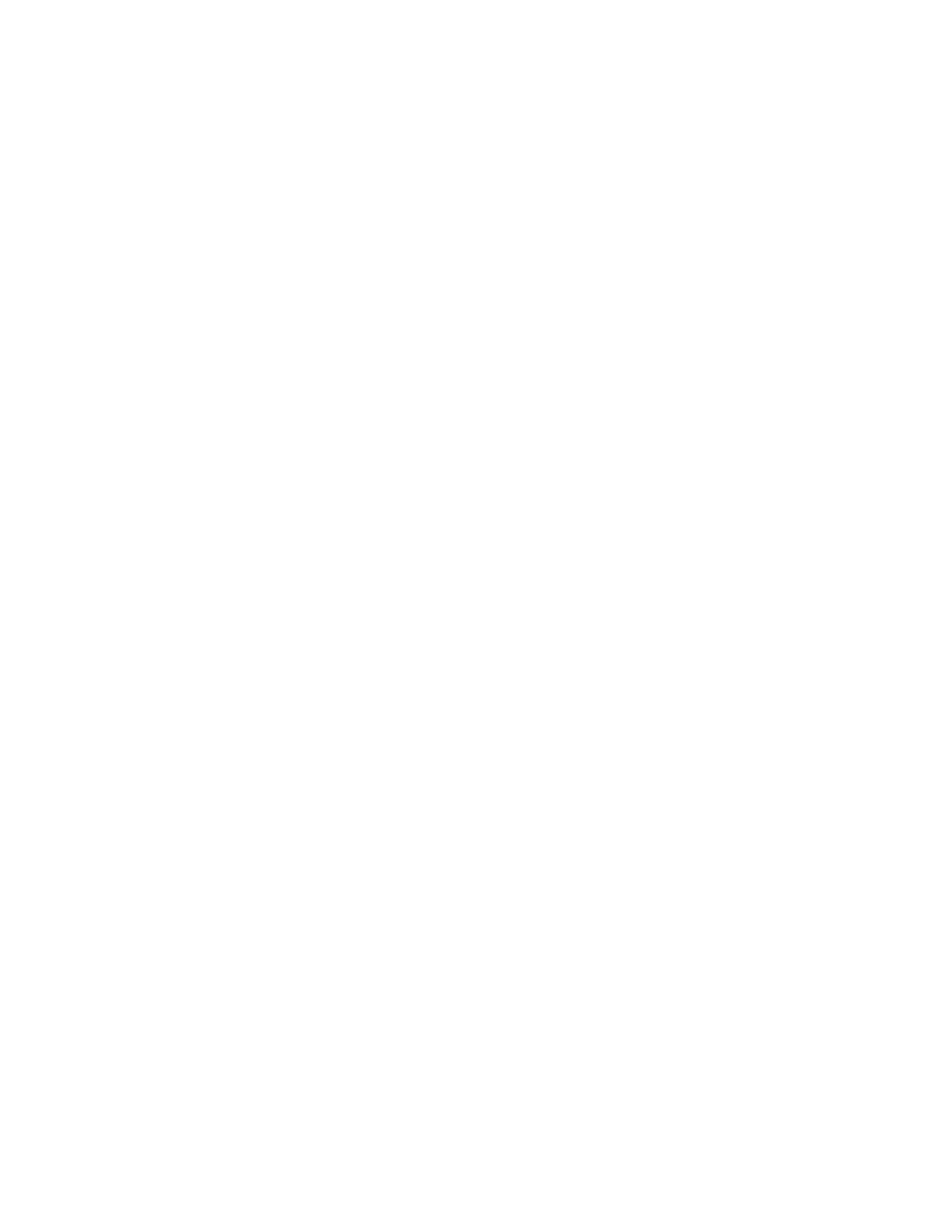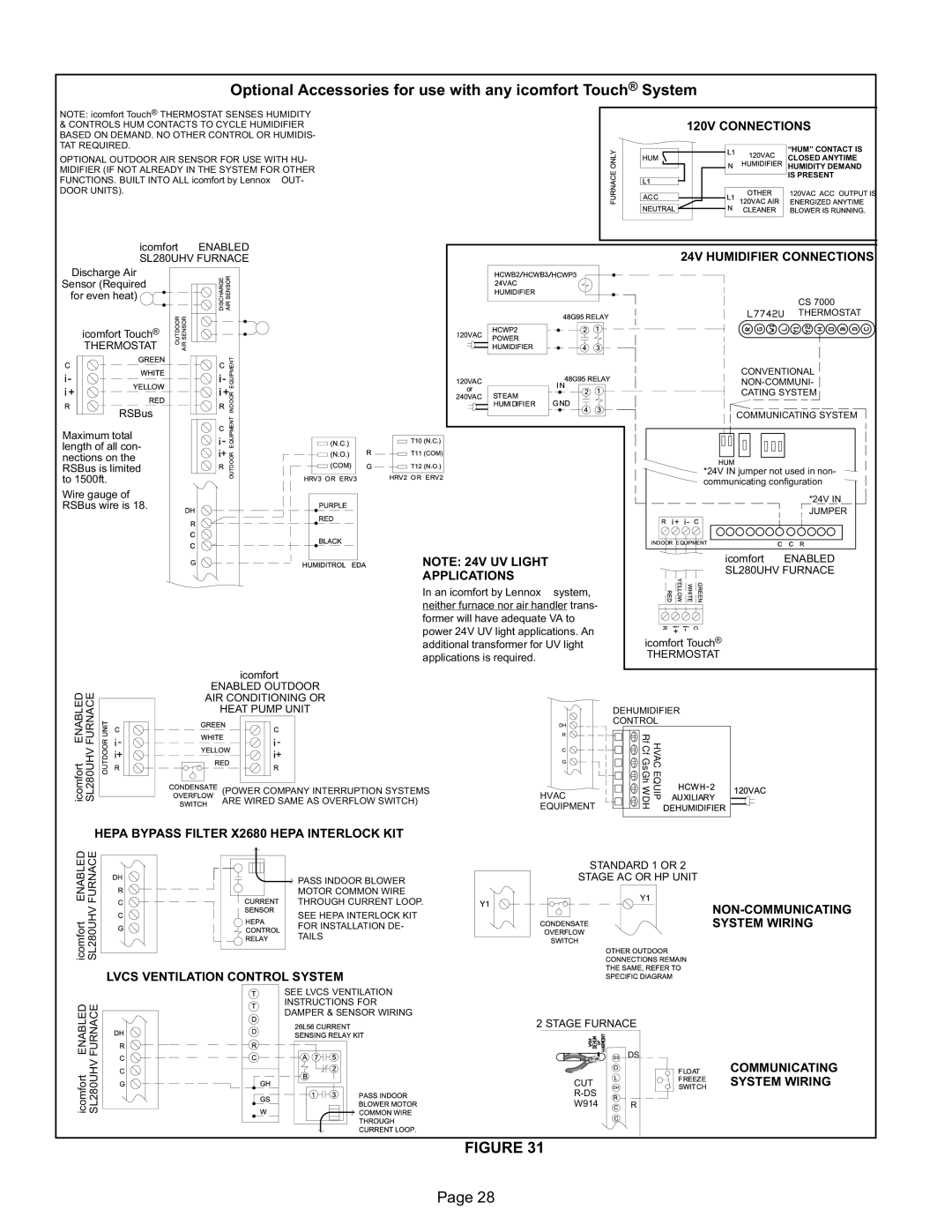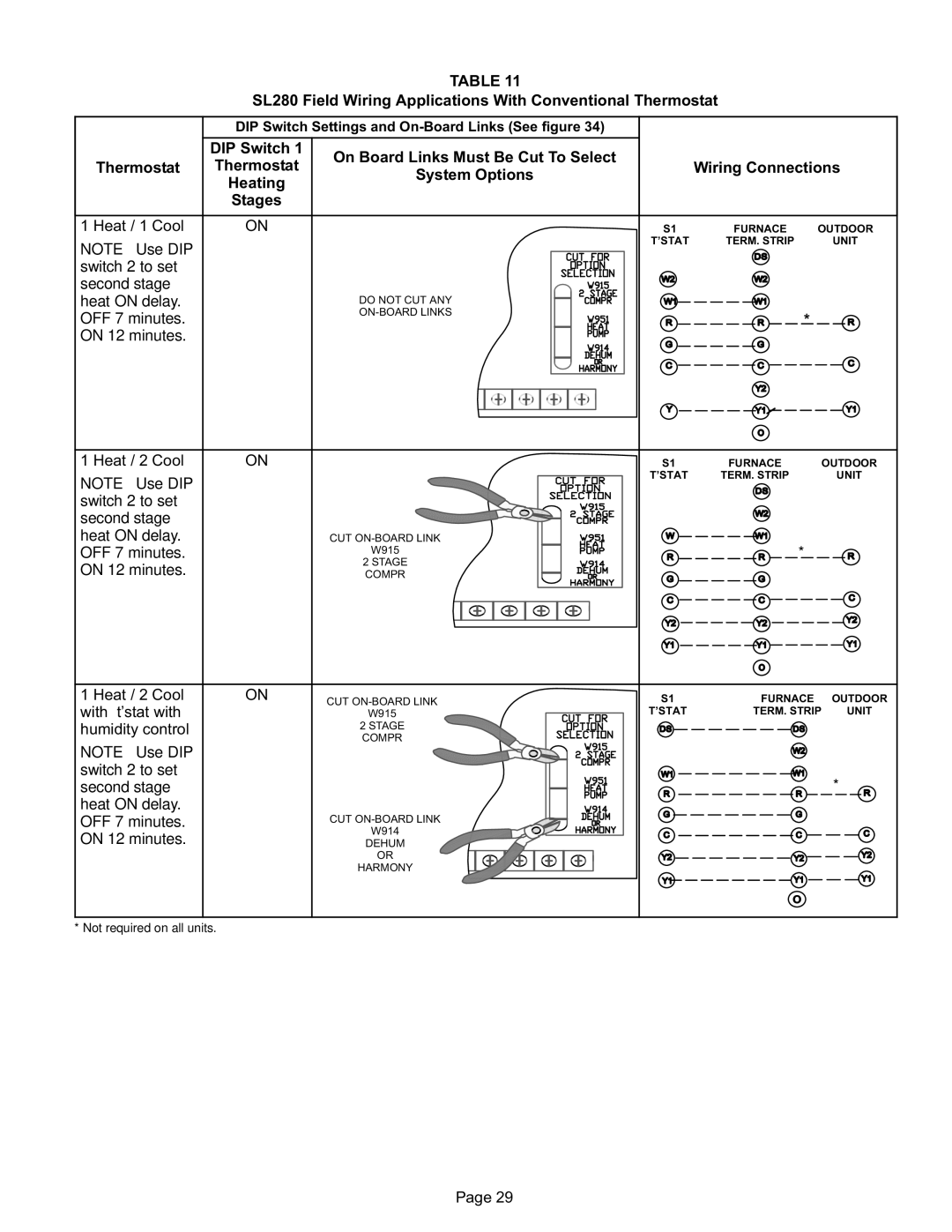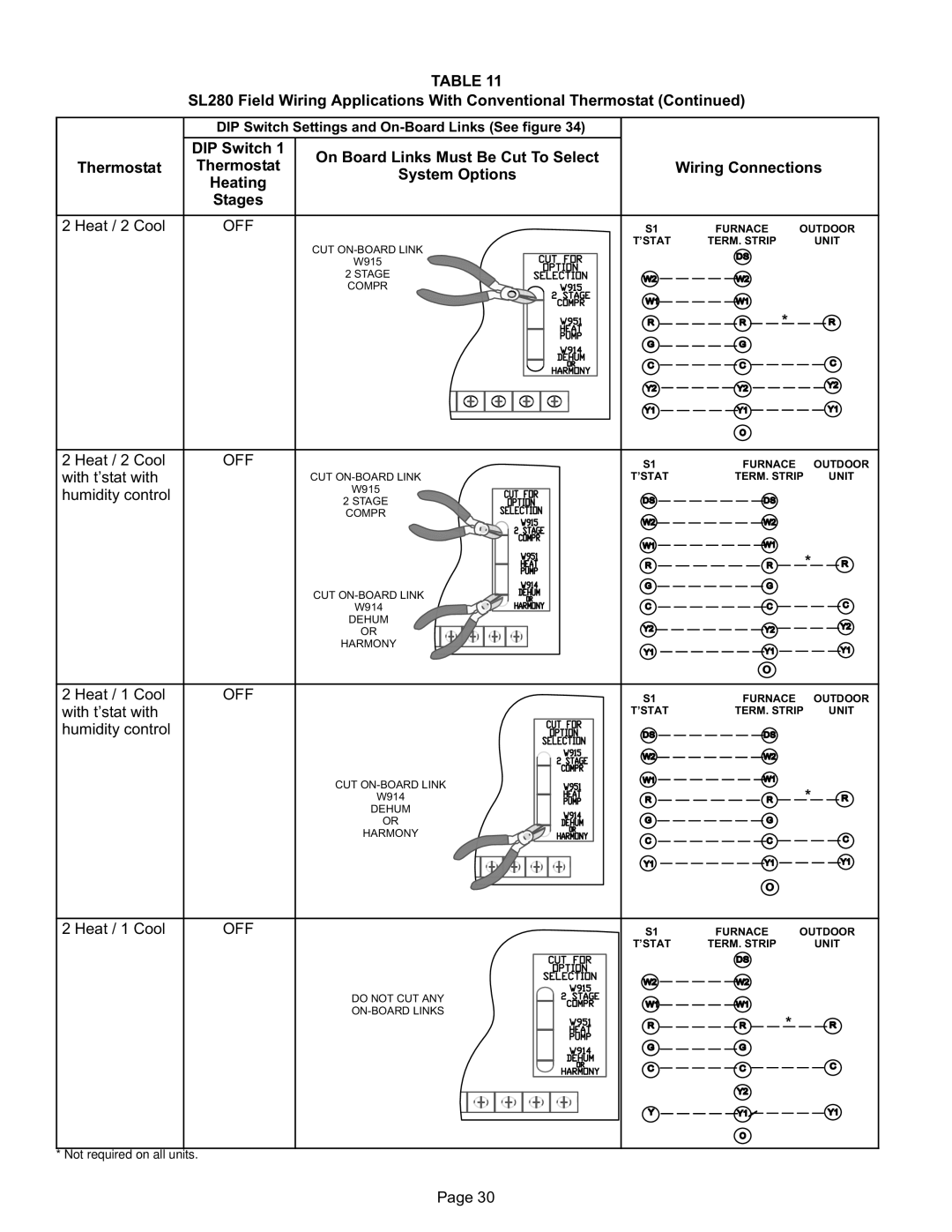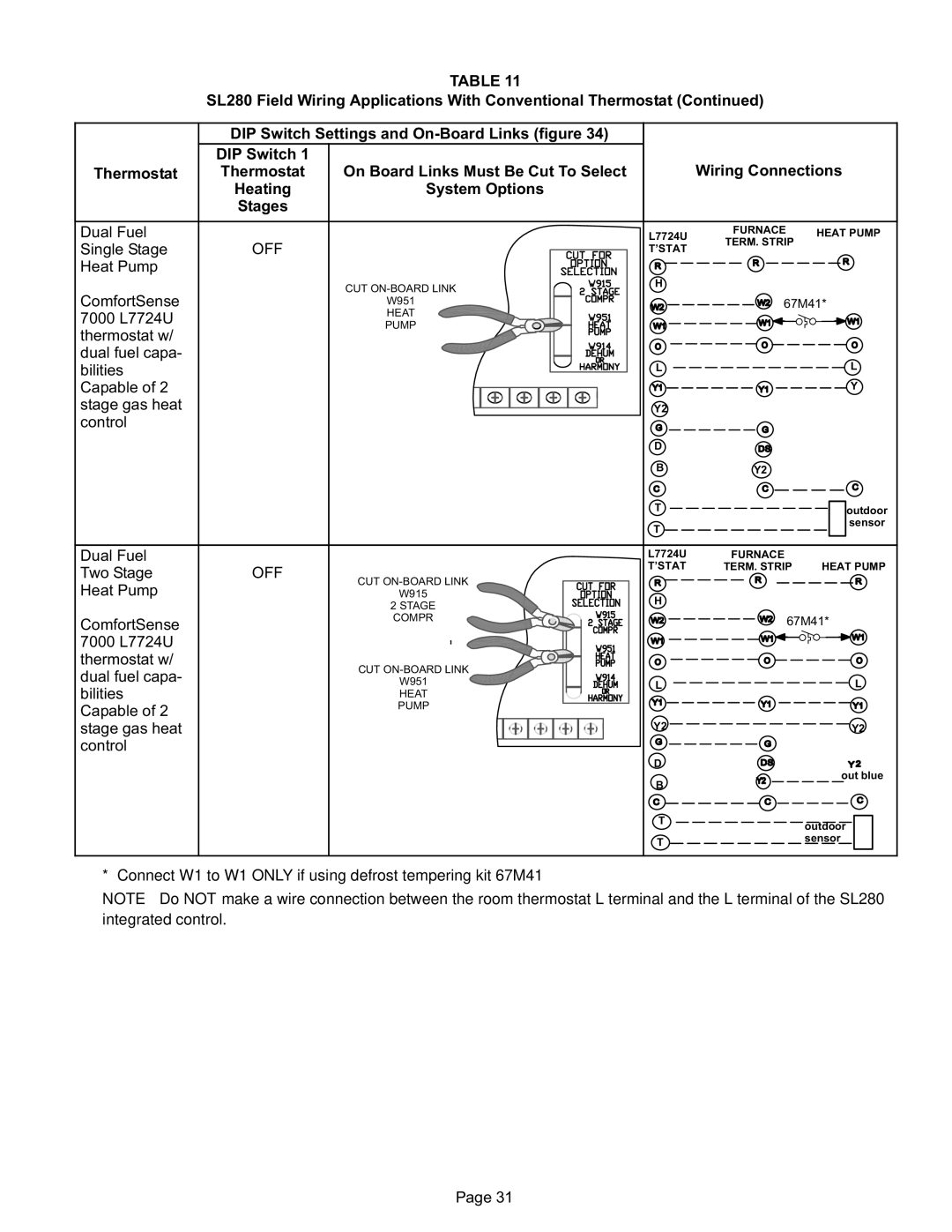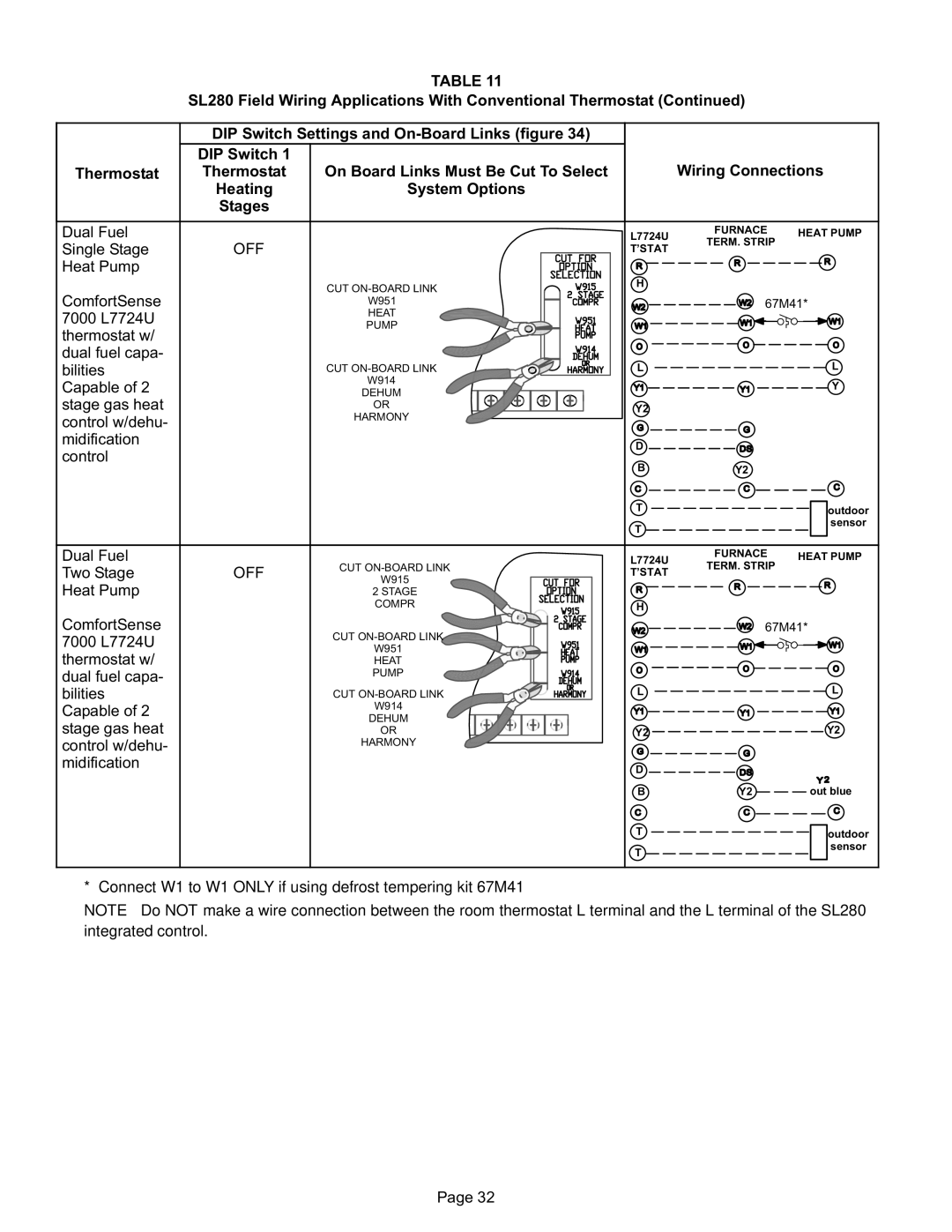
Setting Equipment
![]() WARNING
WARNING
Do not install the furnace on its front or its back. Do not connect the return air ducts to the back of the fur- nace. Doing so will adversely affect the operation of the safety control devices, which could result in per- sonal injury or death.
The SL280UHV gas furnace can be installed as shipped in either the upflow position or the horizontal position. Select a location that allows for the required clearances that are listed on the unit nameplate. Also consider gas supply connections, electrical supply, vent connection, and installation and service clearances [24 inches (610
mm)at unit front]. The unit must be level.
NOTE − Units with 1/2 hp blower motors are equipped with three flexible legs and one rigid leg. See figure 6. The rigid leg is equipped with a shipping bolt and a flat white plastic washer (rather than the rubber mounting grommet used with a flexible mounting leg). The bolt and washer must be removed before the furnace is placed into opera- tion. After the bolt and washer have been removed, the rig- id leg will not touch the blower housing.
SL280UHV07036A and
SL280UHV09036B WITH 1/2 HP
BLOWER MOTOR
RIGID LEG
remove shipping bolt and washer
FIGURE 6
Upflow Applications
Allow for clearances to combustible materials as indicated on the unit nameplate. Minimum clearances for closet or al- cove installations are shown in figure 7.
Upflow Application Installation Clearances
| Top |
| |
Left Side |
| Right Side | |
| AIR FLOW |
| |
| Bottom |
| |
Type of Vent | Type C | Type B1 | |
Connector | |||
|
| ||
Top | 1 in. (25 mm) | 1 in. (25 mm) |
*Front | 2−1/4 in. (57 mm)** | 2−1/4 in. (57 mm) |
|
|
|
Back | 0 | 0 |
|
|
|
Sides | 0† | 0 |
|
|
|
Vent | 6 in. (152 mm) | 1 in. (25 mm) |
|
|
|
Floor | 0‡ | 0‡ |
*Front clearance in alcove installation must be 24 in. (610 mm). Maintain a minimum of 24 in. (610 mm) for front service access. ** 3−1/4 in. if single wall vent pipe is used.
‡For installation on a combustible floor, do not install the furnace directly on carpeting, tile or other combustible materials other than wood flooring.
†Left side requires 3 inches if a single wall vent is used on 14−1/2 inch cabinets, or 2 in. if a single wall vent is used on 17−1/2 in. cabi- nets.
FIGURE 7
Page 9
